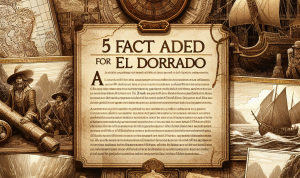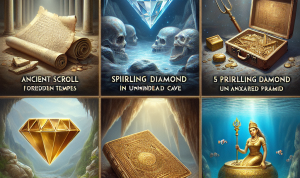Digging for Gold: Uncover the Secrets of Outdoor Treasure Hunt Clues
Sobat Rare Treasuresn Online,
Welcome to the exhilarating realm of outdoor treasure hunts, where adventure and mystery collide. Embark on a journey filled with cryptic clues, hidden treasures, and the thrill of the unknown. In this comprehensive guide, we’ll delve into the art of crafting compelling outdoor treasure hunt clues that will tantalize minds and lead to the ultimate prize.
Types of Outdoor Treasure Hunt Clues
1. Visual Clues
Visual clues rely on sight and observation to decipher their meaning. These may include:
- Photographs: Images of landmarks or objects that guide treasure hunters to a specific location.
- Maps: Aerial or topographic maps with marked treasure spots or subtle hints.
- Symbols: Ancient or modern symbols that represent specific locations or objects.
- Colors: Hidden colors in a landscape or on a clue that lead to a specific direction or object.
2. Written Clues
Written clues engage the brain through language and interpretation. They can take the form of:
- Riddles: Enigmatic puzzles that require problem-solving and lateral thinking.
- Poems: Verses that provide clues through metaphors, symbolism, or hidden messages.
- Acronyms: Initials or abbreviations that stand for specific locations or objects.
- Codes: Secret languages or ciphers that transform the clue into a meaningful message.
3. Auditory Clues
Auditory clues stimulate the sense of hearing and create an immersive experience:
- Soundscapes: Ambient sounds of nature or urban environments that hint at a specific location.
- Voices: Recordings of voices providing hints or guiding treasure hunters in a certain direction.
- Music: Specific melodies or lyrics that lead to a destination or reveal a hidden message.
- Rhythms: Sounds arranged in a pattern that represents a specific location or object.
Crafting Effective Outdoor Treasure Hunt Clues
1. Clarity and Brevity: Clues should be clear and concise, providing just enough information to challenge without frustrating treasure hunters.
2. Relevance: Each clue should relate to the treasure location in a meaningful way, creating a logical progression throughout the hunt.
3. Variety: Incorporate a mix of clue types to keep treasure hunters engaged and prevent monotony.
4. Accessibility: Clues should be accessible to the intended audience, taking into account their age, knowledge level, and physical abilities.
5. Pacing: Distribute clues throughout the hunt to maintain momentum and prevent boredom or frustration.
Clues in a Nutshell
| Clue Type | Examples | Description |
|---|---|---|
| Visual | Photographs, Maps | Images or diagrams that guide treasure hunters to specific locations. |
| Written | Riddles, Poems | Enigmatic puzzles, literary devices, or secret messages that require interpretation. |
| Auditory | Soundscapes, Voices | Ambient sounds, recordings, or musical cues that lead to a destination. |
| Physical | Objects, Containers | Tangible items that provide clues through their shape, texture, or contents. |
| Technological | GPS Coordinates, QR Codes | Modern tools that use technology to reveal the treasure location. |
Frequently Asked Questions About Outdoor Treasure Hunt Clues
1. How long should a clue be?
A clue should be brief yet effective, providing just enough information to challenge without being overwhelming.
2. How many clues should I use?
The number of clues depends on the complexity and length of the hunt. As a general rule, aim for 5-10 clues for a basic hunt.
3. Should I hide the clues?
Hiding clues adds an element of challenge but can be frustrating if treasure hunters get stuck. Consider providing visible clues with secret messages or codes to keep the hunt flowing.
4. Can I use props or objects in my clues?
Absolutely! Physical objects, such as keys, compasses, or small souvenirs, can enhance the experience and make the clues more tactile.
5. How do I make clues accessible?
Tailor clues to the intended audience’s knowledge level. Consider using visual aids, written descriptions, or a combination of both.
6. Should I provide hints?
Hints can be helpful if treasure hunters get stuck, but avoid giving away the answer too easily.
7. How do I incorporate technology into clues?
GPS coordinates or QR codes can add a modern twist to the hunt, leading treasure hunters directly to the prize.
8. What are some creative clue ideas?
Think outside the box with riddles based on landmarks, songs with hidden messages, or sound recordings of animal calls that lead to a specific location.
9. How do I make clues relevant to the treasure location?
Tie clues to the history, local traditions, or unique features of the treasure’s hiding spot.
10. How do I prevent treasure hunters from cheating?
Consider using multiple clues with different solution methods to prevent guesswork or reliance on online resources.
Conclusion
Sobat Rare Treasuresn Online, the quest for buried treasure is not just about finding a hidden prize. It’s an adventure that sparks curiosity, fosters creativity, and creates unforgettable memories. With the right outdoor treasure hunt clues, you can craft an immersive experience that will thrill treasure hunters of all ages.
For more captivating clues and treasure hunt ideas, explore our other articles on the art of crafting the perfect outdoor treasure hunt. Unveil the secrets of lost relics and forgotten lore, and let the adventure begin!
FAQ about Outdoor Treasure Hunt Clues
What is an outdoor treasure hunt clue?
An outdoor treasure hunt clue is a riddle or puzzle that leads participants to the next location in a treasure hunt.
What are some examples of outdoor treasure hunt clues?
- "Look for the tallest tree in the park."
- "Follow the path until you reach a bridge."
- "Find the statue with a missing arm."
How long should outdoor treasure hunt clues be?
Clues should be short and easy to understand, but challenging enough to keep participants engaged. Aim for clues that take 5-15 minutes to solve.
How many outdoor treasure hunt clues do I need?
The number of clues you need will vary depending on the length and difficulty of your treasure hunt. A good rule of thumb is to have one clue for every 10-15 minutes of gameplay.
Where should I hide outdoor treasure hunt clues?
Clues can be hidden in a variety of locations, such as:
- Underneath rocks or logs
- Attached to trees or bushes
- In the crevices of buildings
- Inside hollow logs or stumps
How do I make outdoor treasure hunt clues waterproof?
To make clues waterproof, you can laminate them or place them in a plastic bag. You can also use permanent markers or paint to write the clues on waterproof paper.
What are some tips for writing good outdoor treasure hunt clues?
- Be clear and concise.
- Use simple language that everyone can understand.
- Be creative and original.
- Vary the difficulty of the clues.
- Include visual clues whenever possible.
How do I make outdoor treasure hunt clues more challenging?
- Use more difficult language or concepts.
- Include multiple steps or layers to the clues.
- Hide the clues in more obscure locations.
- Make the clues time-sensitive or require participants to complete a task.
How do I make outdoor treasure hunt clues more accessible?
- Use simple language and avoid slang.
- Provide visual cues or alternative formats for clues.
- Allow participants to ask for help if needed.
- Make sure the clues are appropriate for the age and abilities of the participants.
What are some fun ways to incorporate technology into outdoor treasure hunt clues?
- Use QR codes or NFC tags to provide additional information or challenges.
- Use GPS coordinates to lead participants to the next location.
- Create an online platform where participants can submit their answers and track their progress.



